Improve the aesthetics of your prints with layer covering filaments.
:fill(white)/a0141ca06fdc5b5cc30ba3aa8883d028)
Are you just starting your journey with 3D printing? Hoping for easy printing while creating stunning models that leave everyone amazed? Or perhaps you’ve already taken your first steps but are still searching for ways to reduce visible layer lines? Looking to achieve a more professional and polished appearance for your 3D prints?
The answer to your questions lies in filaments that reduce the visibility of layer lines. Read our article and discover which material best meets your expectations.
Methods for Reducing Layer Visibility
3D printing using FDM/FFF technology is inherently associated with layer lines. While some find their appearance charming, others strive to minimize their visibility, often through post-processing techniques. However, post-processing can be time-consuming and requires additional effort and cost.
Layer visibility can be reduced at the model preparation stage by decreasing the layer height. The smaller the height, the more precise the detail. However, lowering the layer height below 0.10 mm is not recommended. The difference between 0.10 mm and 0.07 mm/0.05 mm is almost imperceptible, yet the printing time increases significantly. So, is there a way to hide layers without additional processing?
The Secret Lies in Additives
If you’re looking for innovative solutions and stunning surface finishes, you should explore filaments enriched with additives. These filaments give the final print an original surface finish while reducing the visibility of layer lines. Additionally, they are easy to print with, which is particularly appealing for beginners in 3D printing.
PLA CarbonLook, PET-G CarbonLook, BioWOOD, and PLA Starter Glitter allow you to achieve incredible effects without additional surface treatment or investment in expensive equipment.
Carbon Finish and Layer Concealment – PLA CarbonLook
If you prioritize the visual appeal of the final print over industrial applications, PLA CarbonLook from ROSA3D is sure to delight. This filament combines PLA (polylactic acid) with a small amount of carbon fibers.
You might wonder: “Carbon fiber in filament? Why?”
It’s to provide decorative properties to printed models and conceal the visibility of layer lines created during 3D printing.
Concerned that carbon fiber additives could be abrasive to nozzles? You’re right in some cases. In most technical materials, the amount of carbon fiber is high enough to significantly increase abrasiveness, making a steel nozzle necessary. However, the CarbonLook series has been designed to minimize abrasion so you can enjoy stunning prints even with a brass nozzle.
Prints made with PLA CarbonLook feature excellent detail reproduction and boast a beautiful, satin, slightly glossy surface where layer lines are almost invisible. The texture is slightly rough to the touch, adding a unique character.
PLA CarbonLook has properties similar to other PLA filaments from ROSA3D. It is easy to print with, has low stringing, and excellent layer adhesion.
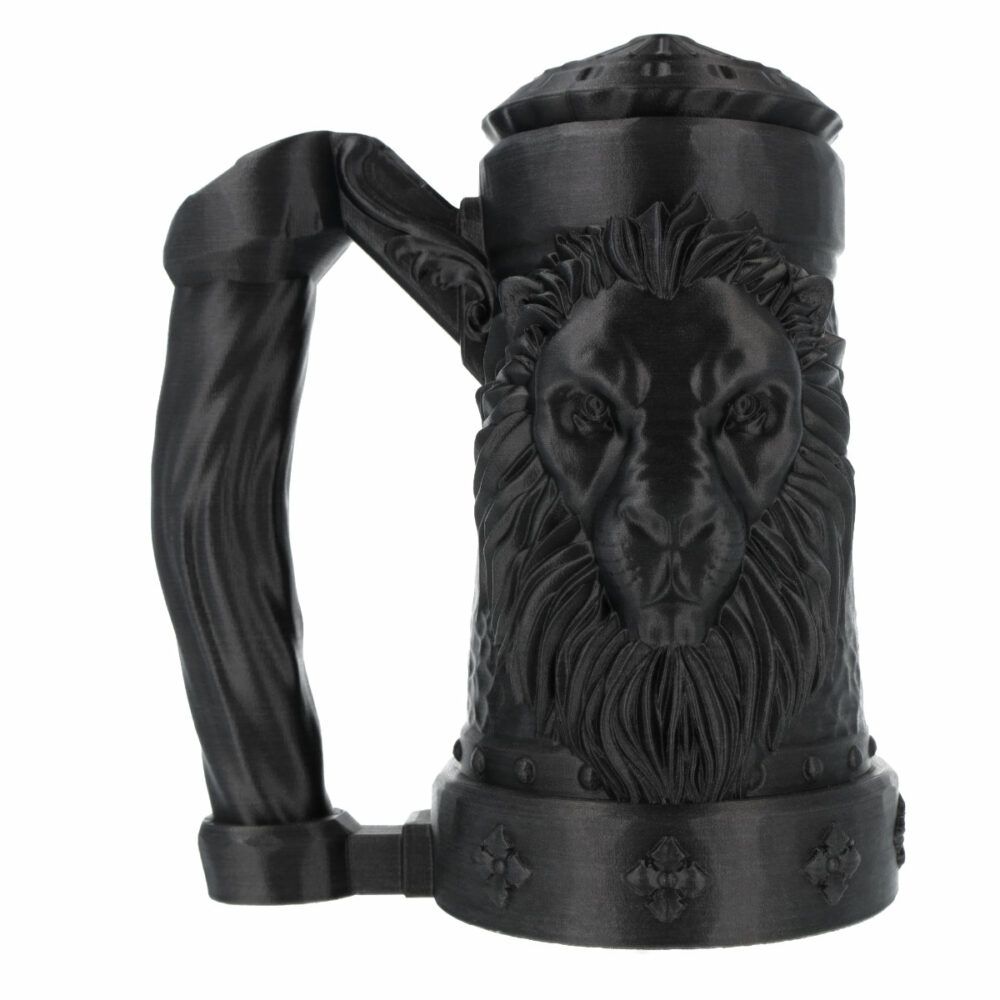
Print made with PLA CarbonLook filament
Subtle Finish and Nearly Invisible Layers – PET-G CarbonLook
If you need a stronger print, prefer PET-G, and don’t require an ultra-strong technical material, consider PET-G CarbonLook.
Final prints feature a satin finish with a surface slightly more glossy than PLA CarbonLook and, most importantly, nearly invisible layer lines. Another advantage of PET-G CarbonLook is the ability to achieve light transparency in models with very thin walls.
Printing with PET-G CarbonLook is characterized by low stringing and excellent layer adhesion. A closed printing chamber is not required. For detailed settings, refer to the TDS sheet available on the product page.
Worried about carbon fiber potentially wearing down brass nozzles? Rest assured! Both PLA CarbonLook and PET-G CarbonLook are designed to minimize abrasive properties.
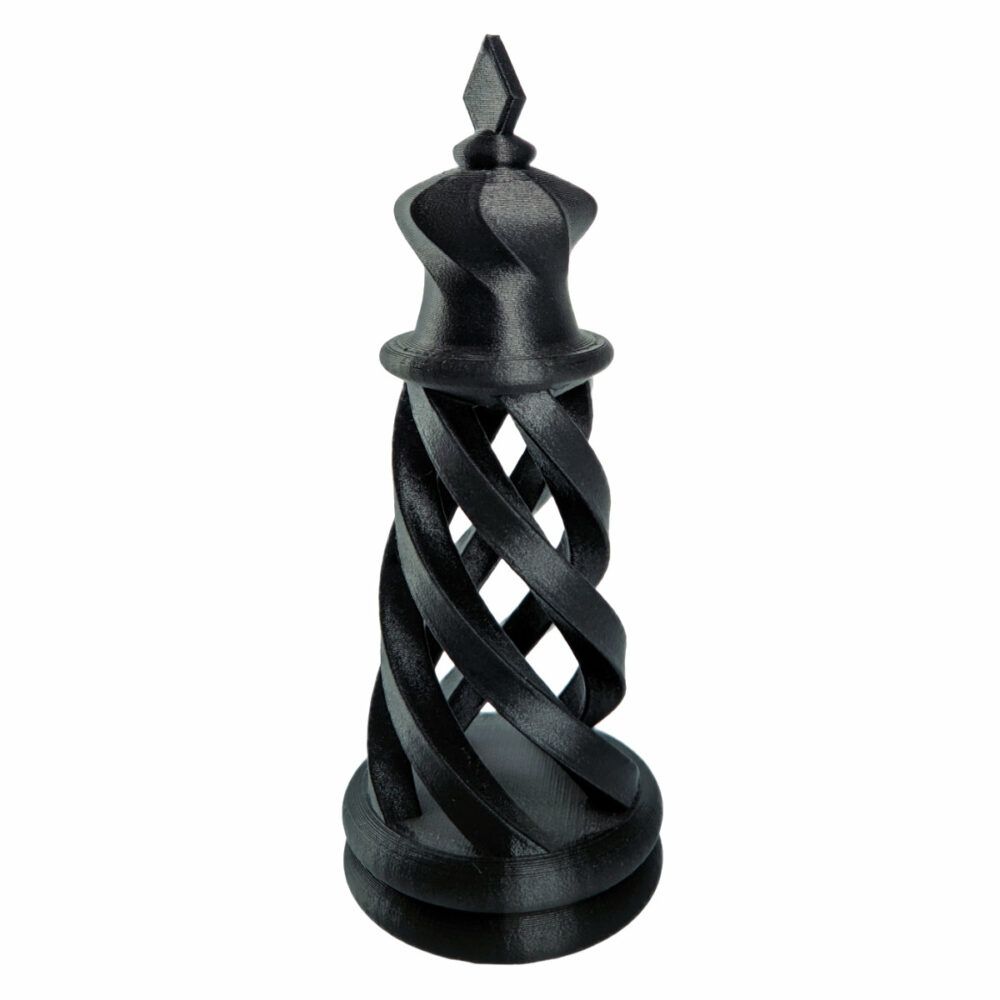
Print made with PET-G CarbonLook filament
Eye-Catching Sparkle – PLA Starter Glitter
Another filament that helps conceal layer lines in finished prints is PLA Starter in the Glitter Graphite and Glitter Bronze color variants. Both filaments include a unique additive.
PLA Starter Glitter Bronze contains a red glitter additive that perfectly complements the bronze base. On the other hand, final prints made with PLA Starter Glitter Graphite are characterized by a graphite tone with dispersed silver glitter particles.
The glitter embedded in the model’s structure sparkles, creating an effect that conceals layer lines. Light rays striking the glitter particles are reflected or scattered in all directions, creating various light effects. This phenomenon is particularly noticeable in small details, drawing the viewer’s attention to the shimmering particles rather than the layer lines of the printed model.
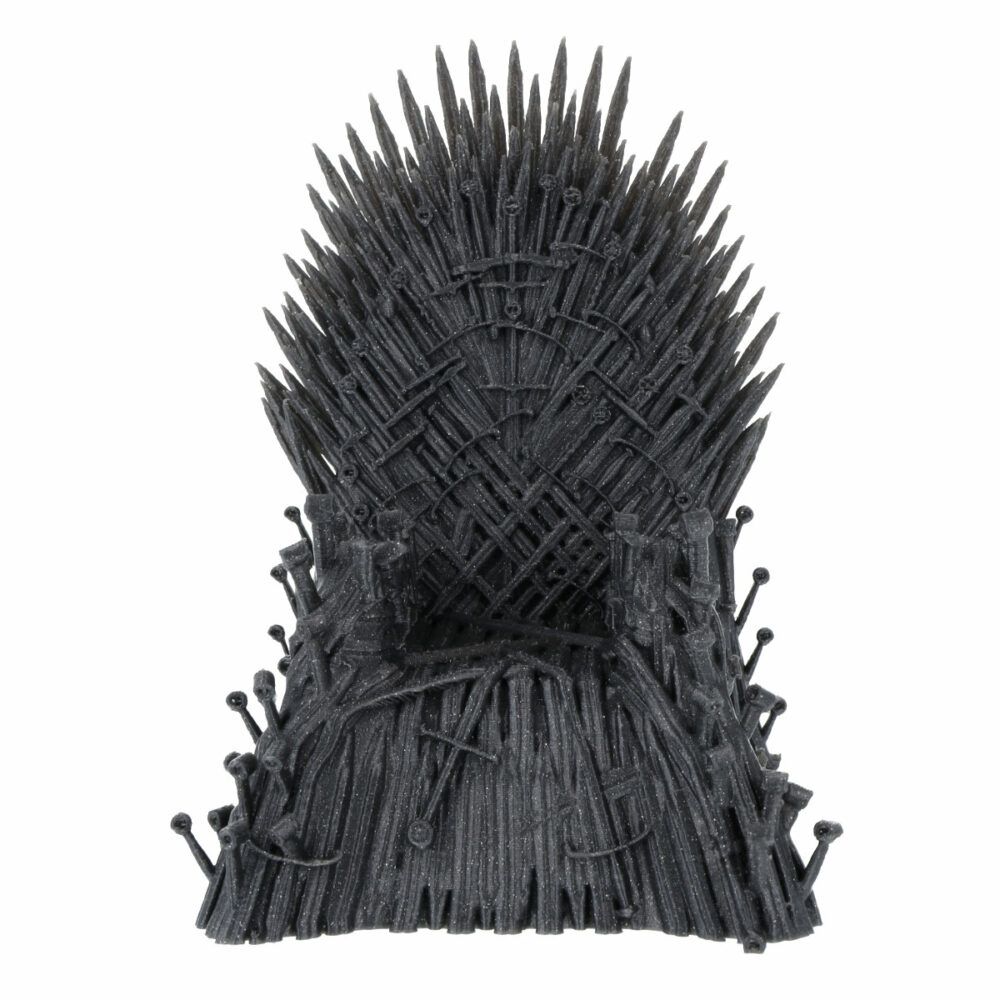
Print made with PLA Starter Glitter Graphite filament
PLA Starter in Glitter Bronze and Glitter Graphite variants is designed for beginner users who want unique surface finishes without the need for additional post-processing. It features low shrinkage and emits no unpleasant odor during printing. Prints made with PLA Starter boast excellent layer adhesion and detailed accuracy.
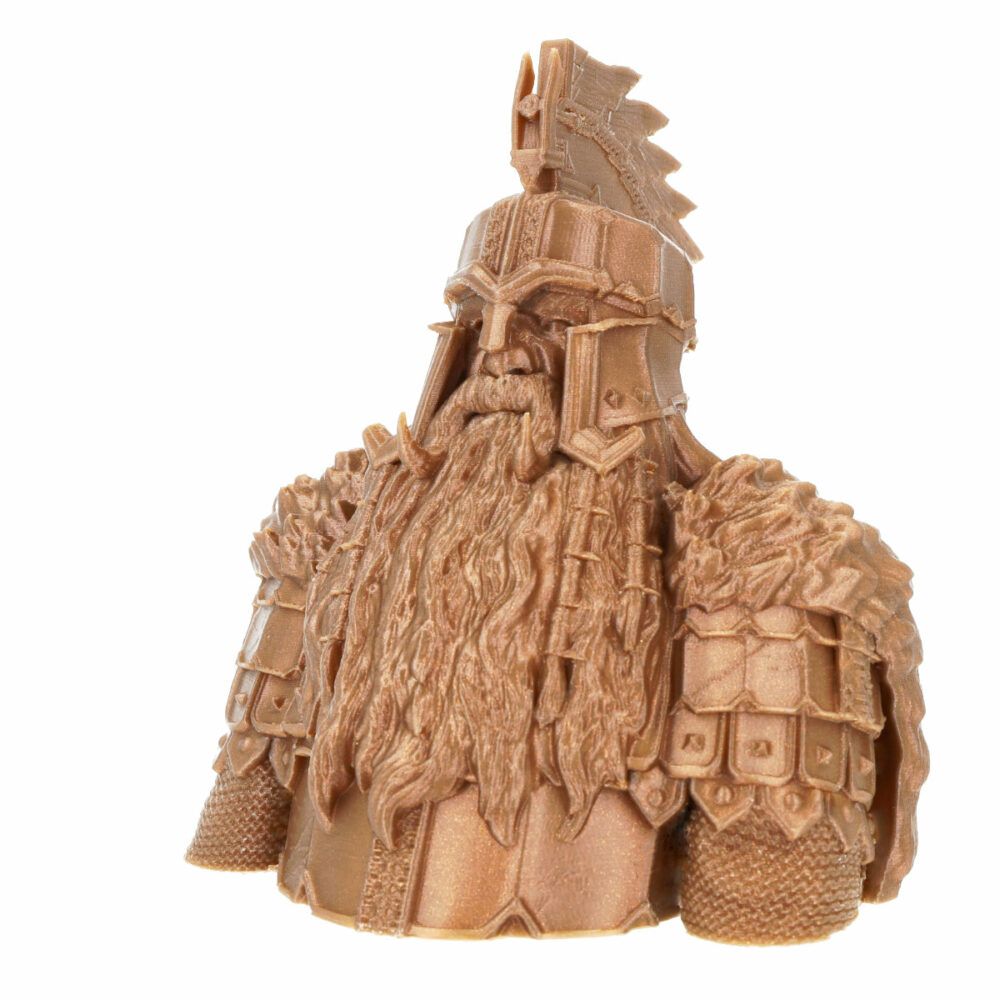
Print made with PLA Glitter Bronze filament
100% Natural – BioWOOD
BioWOOD is a filament with a remarkable composition. It was developed as an alternative to existing wood-like materials that only mimic wood superficially. This composite material’s ingredients are impressive.
Polycaprolactone (PCL), polyester, starch, lignin, natural resins, waxes, oils, natural fatty acids, cellulose, and natural fibers make this filament suitable for disposal in a home compost bin without harming the environment.
The addition of real wood fibers in BioWOOD gives the final prints a natural wood-like aroma and texture while making layer lines nearly invisible. The porous surface allows for easy coloring, staining, sanding, and gluing—just like real wood.
It’s worth noting that BioWOOD is slightly more demanding to print compared to standard PLA due to its unique composition.
For more details about “BioWOOD,” check out the dedicated article: BioWOOD – A Compostable Filament with Real Wood Fibers.
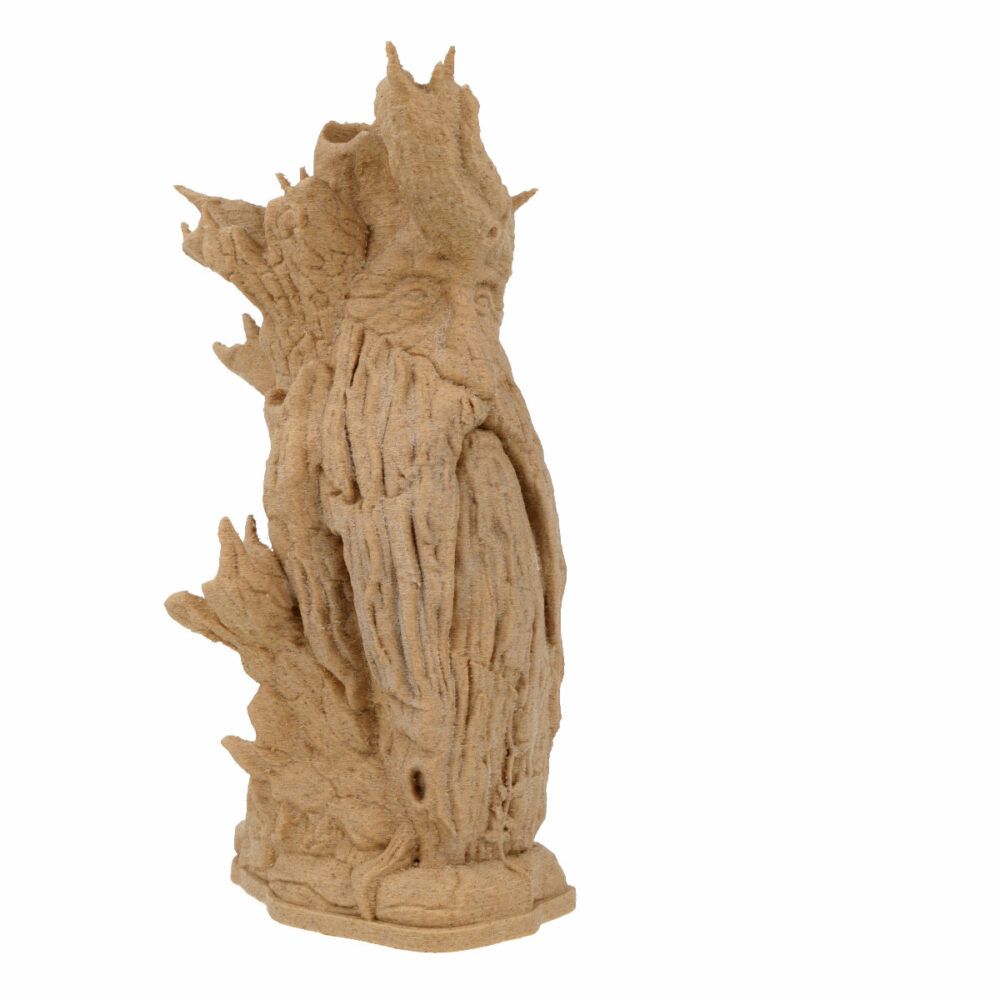
Print made with BioWOOD filament
Vivid Neon Colors – PLA Starter and PET-G Standard
The ROSA3D range also includes filaments whose layer-hiding properties come primarily from their intense colors. These are materials with bright, neon hues: PLA Starter Neon Green, PLA Starter Neon Yellow, PLA Starter Neon Orange, PET-G Standard Neon Yellow, and PET-G Standard Juicy Orange.
The vivid saturation of these colors draws attention away from layer lines and focuses on the vibrant color. Prints seem to emit light, making them highly visible and eye-catching.
For those unfamiliar with 3D printing, models with smooth surfaces—like the ones shown in the images—might appear to have been injection molded. You would need to look very closely to see the layers and the texture typical of FDM/FFF technology.
Filaments in the PLA Starter and PET-G Standard neon colors are perfect if you’re looking for easy printing with a WOW factor. (For more information and print settings, check out the product pages in our shop.)
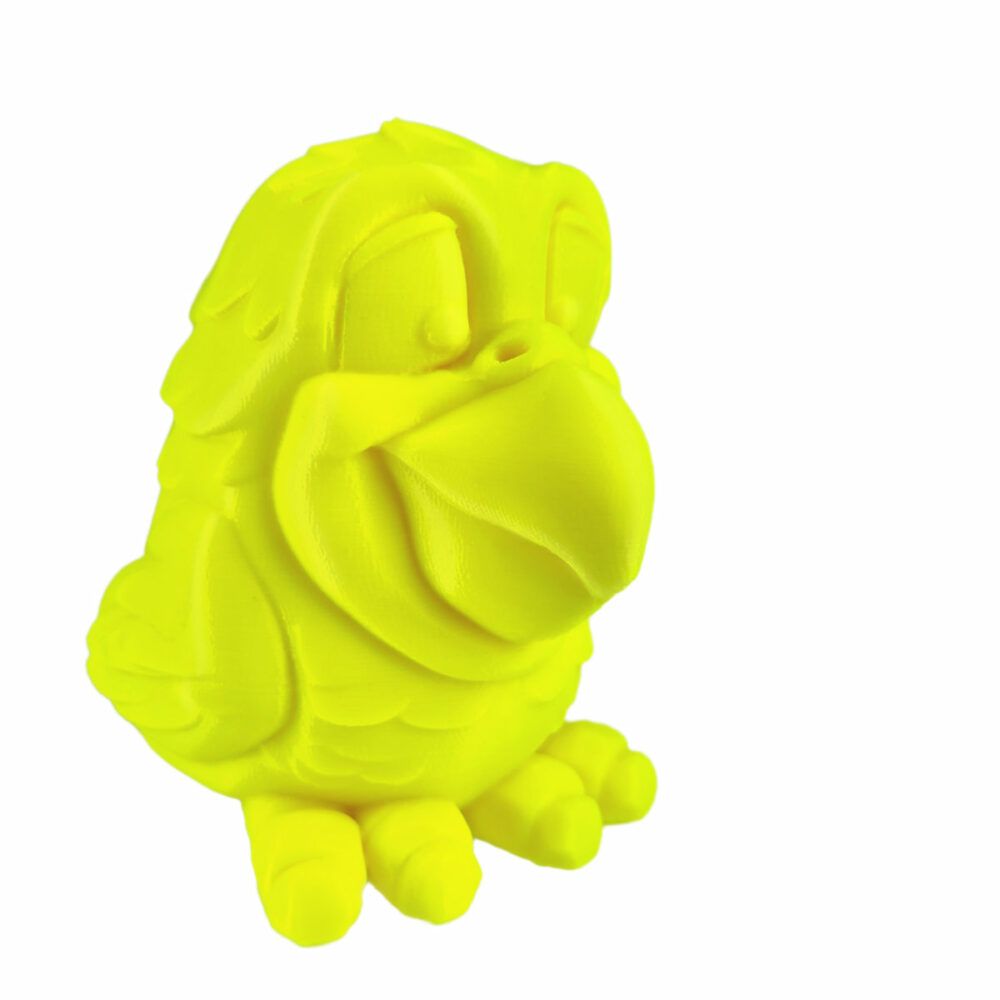
Print made with PET-G Standard Neon Yellow filament
Now that you’ve learned about layer-concealing filaments, it’s time to try them for yourself!
Don’t be afraid to experiment and choose the material that will help you achieve the desired effect. These filaments are not only a convenience for advanced 3D printing enthusiasts but also an excellent opportunity for beginners to take their 3D printing to the next level. They allow for aesthetic prints, which is especially important when showcasing your projects.
Above all, have fun and unleash your creativity with layer-concealing filaments, and see for yourself how much they can elevate the aesthetics of your prints.
ROSA PLAST SP. z o.o.
ul. Hipolitowska 102B
05-074 Hipolitów, POLAND
Email
eshop@rosa3d.pl
Our team is at your disposal on working days during the hours:
od 7:00 do 15:00
Follow us






